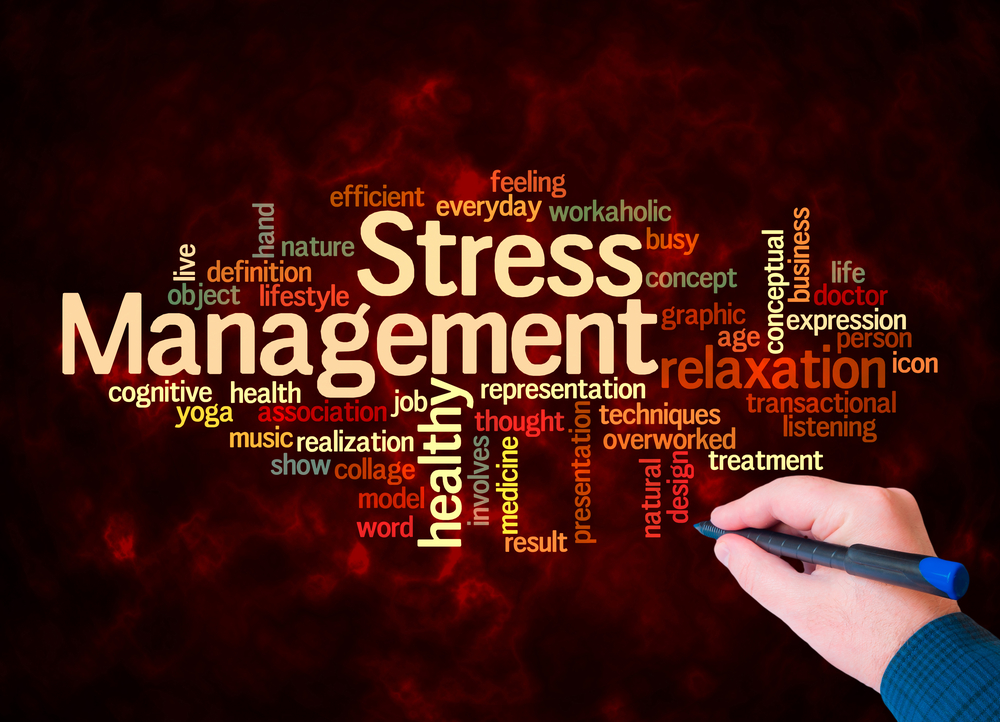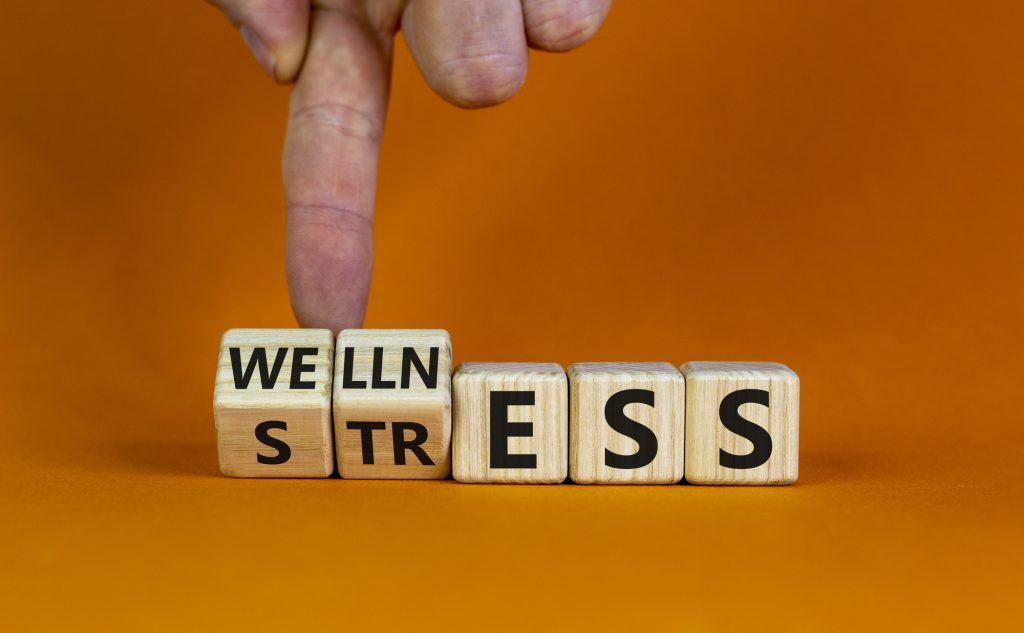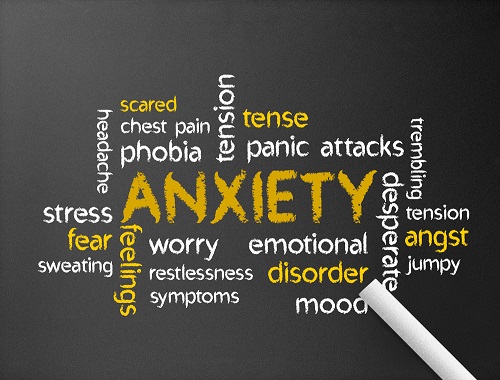
Written by Shebna N. Osanmoh, PMHNP-BC.
If you look around yourself, you will find a lot of people from different age groups who have suffered from anxiety at some point in their lives. Look closely at their story, and you’ll see they experience anxiety due to different reasons or some serious events in their lives. These events might be anything like an exam, a job interview, a competition, a debate on serious issues, or any traumatic period in our lives or at work. Many of these people who suffer from long-term anxiety may ultimately end up having an anxiety disorder.
Anxiety can rapidly shift a person’s emotions from a stable condition to a hyper state and further make it out of control. The person may feel disproportionately worried and may be experiencing severe panic attacks. That is why it is vital to have strong coping and grounding methods in place to assist people in either avoiding these circumstances or bringing their core feelings back into balance if they get agitated or overwhelmed.
Considering the reality that a lot of people experience anxiety and stress, it is also deniable that only a few of those sufferers open up about their situation and seek strong coping skills. A lack of knowledge, social pressure, and hesitation are the prime reasons for this dilemma. However, there are plenty of ways actually available to them that can help them deal with anxiety and prevent it from dominating their lives. Undoubtedly, the 3-3-3 rule is one of the most effective ones.
In this article, I am going to discuss the 3-3-3 rule, how it works, and why it is effective for individuals looking to handle their anxiety with ease. But first, let us dig a bit deeper into the root problem that makes this therapy important.
Why do people experience Anxiety?
Many of my patients have asked me this question several times, so I believe readers of this content must also be informed about this. Anxiety can arise from a complex interplay of various factors, both biological and environmental. Let’s elaborate on the common factors:
- Genetics and Family History
Research shows that anxiety can run in families. If you have relatives who suffer from anxiety disorders, there’s a possibility that you may be genetically predisposed to experience anxiety. Specific genes are believed to influence how the brain regulates emotions and responds to stress, making people more susceptible to anxiety.
- Brain Chemistry
The brain’s chemical balance, particularly the levels of neurotransmitters like serotonin, dopamine, and gamma-aminobutyric acid (GABA), plays a key role in regulating mood and emotions. An imbalance or dysfunction in these neurotransmitters can lead to heightened feelings of anxiety. Psychiatrists may prescribe medications like antidepressants to target these chemicals to help manage anxiety symptoms.
- Stressful Life Events
Experiencing significant stress, whether through major life events (like moving to a new place, starting a new job, or ending a relationship) or daily pressures, can increase feelings of anxiety. When stress becomes chronic, it can overwhelm the body and mind, leading to anxiety disorders over time.
- Traumatic Experiences
Trauma, such as abuse, violence, accidents, or the loss of a loved one, can have long-lasting effects on our mental health. People who have gone through traumatic events often develop anxiety as part of post-traumatic stress disorder (PTSD) or in other forms, as the brain may become conditioned to remain in a heightened state of alertness.
- Early Childhood Experiences
Early life experiences, including how a person was raised, can impact emotional development. A chaotic or overly strict environment, neglect, or inconsistent caregiving during childhood can make a person more vulnerable to anxiety. Children who grow up in unstable or unsafe environments may develop anxiety due to constant uncertainty or fear. I have seen many kids who had a stressful childhood and grow into an introverted person, lack self-confidence, and end up experiencing anxiety disorder.
- Personality Traits
Certain personality traits, like being naturally shy, sensitive, or perfectionistic, can make an individual more prone to anxiety. People who tend to overanalyze, seek approval from others, or fear making mistakes may experience more stress and worry, leading to chronic anxiety. I have seen one of the patients with anxiety disorder canceled her appointment seven times before she finally met up for treatment.
- Cognitive Patterns
The way people think can also influence anxiety levels. Those who frequently engage in negative thinking, catastrophic thinking (imagining the worst possible outcomes), or overgeneralization are more likely to develop anxiety. Cognitive distortions can perpetuate anxiety, making situations seem more threatening than they actually are.
Anxiety disorders can be developed in various forms, affecting your mental, physical, and behavioral health. While occasional anxiety is common among people, continuous and severe anxiety can significantly impact a person’s daily functioning and well-being. It is important for people to identify these symptoms and act wisely.
Psychological Symptoms
People with anxiety often experience:
- Excessive Worry – You might have persistent, unrealistic worry about everyday situations or tasks.
- Difficulty Sleeping: The most common one is trouble falling asleep or staying asleep. It often happens due to persistent worry.
- Racing Thoughts: You are facing the inability to stop a rapid flow of thoughts.
- Irrational Fears: You are experiencing fear disproportionate to the actual threat. These fears are often tied to specific phobias, such as fear of heights, fear of talking before a large number of people, or different social situations.
- Anticipatory Anxiety: You are getting overwhelmingly worried about future events that may not happen.
- Panic Attacks: You are facing sudden, intense fear with physical symptoms such as chest pain, dizziness, and shortness of breath.
Physical Symptoms
Physical signs of anxiety can include:
- Shortness of Breath – Difficulty breathing, often during panic attacks.
- Increased Heart Rate – Palpitations or a racing heart, sometimes confused with heart issues.
- Muscle Tension – Continuous tightening of muscles, especially in the neck, shoulders, or back.
- Sweating – Excessive perspiration, particularly during moments of fear or worry.
- Gastrointestinal Distress – Upset stomach, nausea, or irritable bowel symptoms.
- Dizziness or Lightheadedness – Feeling faint or off-balance, often due to hyperventilation or a drop in blood pressure.
Behavioral Symptoms
Behavioral changes can be seen as:
- Avoidance – You are actively avoiding situations or places that might trigger your anxiety.
- Procrastination – You are putting off important tasks that provoke anxiety, even if you are keen to do those tasks.
- Social Withdrawal – You are isolating yourself from social events or work environments to avoid judgment or embarrassment.
Long-Term Effects Of Anxiety
If you leave your anxiety issues untreated, it can lead to other chronic health issues, including:
- Cardiovascular Problems – Chronic stress and increased heart rate can contribute to heart disease.
- Digestive Issues – Long-term gastrointestinal problems such as irritable bowel syndrome (IBS).
- Weakened Immune System – Constant anxiety can suppress immune function, making one more susceptible to infections.
- Mental Health Concerns – Anxiety can co-occur with depression and lead to substance abuse. In severe cases, it can trigger suicidal tendencies.
What Are The Common Types Of Anxiety Disorders
According to the National Institute of Mental Health Trusted Source, common anxiety disorders include:
Generalized Anxiety Disorder (GAD)
GAD is characterized by chronic, excessive worry about a wide range of topics, including daily activities, personal health, work, or social interactions. The worry is difficult to control and occurs on most days for at least six months.
Symptoms:
- Restlessness or feeling on edge
- Fatigue
- Difficulty concentrating or mind going blank
- Irritability
- Muscle tension
- Sleep disturbances
The National Institute of Mental Health (NIMH) provides comprehensive resources about GAD, highlighting that around 2.7% of U.S. adults experience GAD at some point, with women being twice as likely to be affected as men【source: NIMH].
Panic Disorder
Panic disorder involves recurrent, unexpected panic attacks. A panic attack is a sudden, intense episode of fear or discomfort that peaks within minutes and is often accompanied by physical symptoms such as a pounding heart, sweating, or shortness of breath.
Symptoms:
- Palpitations, pounding heart, or accelerated heart rate
- Sweating
- Trembling or shaking
- Feelings of choking
- Chest pain or discomfort
- Fear of losing control or “going crazy.”
- Fear of dying
The Substance Abuse and Mental Health Services Administration (SAMHSA) describes panic disorder as a condition that affects around 2.7% of adults in the U.S. annually. Panic disorder can be debilitating but is treatable with therapy and medication【source: SAMHSA】.
Social Anxiety Disorder
Social anxiety disorder is identified by a severe sense of fear towards social situations where people can be criticized by other people. The individual often fears they will be embarrassed, humiliated, or rejected, leading to avoidance of social interactions.
Symptoms:
- Intense fear of interactions or being observed by others
- Avoidance of social or performance situations
- Physical symptoms such as blushing, trembling, sweating, or a shaky voice
- Fear of judgment or embarrassment
The Centers for Disease Control and Prevention (CDC) notes that social anxiety disorder affects around 7.1% of the U.S. population annually. It often begins in adolescence and can persist into adulthood if left untreated【source: CDC].
Phobia-related Disorders
Specific phobias are intense, irrational fears of specific objects or situations. These phobias can cause distress and avoidance behavior, even if the feared object or situation poses little or no actual danger.
Types of Phobias:
- Animal Phobias: Fear of animals such as spiders (arachnophobia) or snakes (ophidiophobia).
- Natural Environment Phobias: Fear of natural events like heights (acrophobia) or storms (astraphobia).
- Situational Phobias: Fear of specific situations, such as flying (aviophobia) or enclosed spaces (claustrophobia).
- Blood-Injection-Injury Phobia: Fear of blood, injections, or injury.
According to the National Institute of Mental Health (NIMH), specific phobias are among the most common anxiety disorders, affecting about 9.1% of U.S. adults each year【source: NIMH】.
These anxiety disorders are clinically recognized. But there are also other types of anxiety that people commonly experience:
Obsessive-Compulsive Disorder (OCD)
OCD is identified by the constant, invasive thoughts (obsessions) and repetitive mental activities (compulsions) that push an individual to perform certain things. By performing these actions, a person tries to reduce his/her anxiety and avoid those events that trigger such anxiety. However, these actions provide only temporary relief and can interfere with the person’s normal daily functioning.
Symptoms:
- Obsessions – Recurrent, unwanted thoughts or urges (e.g., fear of germs or contamination, fear of harming others, or needing things to be symmetrical).
- Compulsions – Repetitive behaviors (e.g., excessive handwashing, checking locks or appliances, counting, or organizing) performed in response to obsessions.
The National Institute of Mental Health (NIMH) notes that approximately 1.2% of U.S. adults have OCD, and it is equally common in men and women. Treatment can include a combination of cognitive-behavioral therapy (CBT) and medication such as selective serotonin reuptake inhibitors (SSRIs)【source: NIMH】.
Separation Anxiety Disorder
Separation Anxiety Disorder is a condition where individuals experience excessive fear or anxiety about being separated from attachment figures (such as parents, caregivers, or partners). This disorder is most commonly associated with children but can also affect adults.
Symptoms:
- Excessive distress when anticipating or experiencing separation
- Persistent worry about losing or harm befalling loved ones
- Reluctance to be alone or sleep away from attachment figures
- Physical symptoms like headaches or nausea when separation occurs
According to the American Psychiatric Association (APA), Separation Anxiety Disorder affects around 4% of children and a smaller percentage of adults. Therapy and family support plays a crucial role in treating this condition【source: APA】.
Health Anxiety (Hypochondria)
Definition: Health anxiety is an excessive preoccupation with the fear of having a serious illness despite medical reassurance. Individuals with this anxiety often misinterpret normal bodily sensations as signs of severe disease.
Symptoms:
- Constant worry about health, even when there are no symptoms
- Frequent checking of the body for signs of illness
- Avoiding medical care out of fear of bad news
- Repeated medical consultations or research about health conditions
The NIMH categorizes health anxiety under somatic symptom disorders, which involve excessive concern about physical symptoms. Cognitive-behavioral therapy (CBT) is often used to treat individuals with this form of anxiety【source: NIMH】.
Performance Anxiety
Definition: Performance anxiety, often referred to as “stage fright,” occurs when a person experiences intense fear or nervousness in situations where they are expected to perform, such as public speaking, sports, or artistic performances.
Symptoms:
- Racing heart, sweating, trembling, dry mouth
- Fear of embarrassment or failure
- Difficulty focusing or remembering material during performances
The CDC discusses performance anxiety as a subset of social anxiety disorder, particularly when it involves fear of public performance. Treatment can include desensitization techniques and therapy【source: CDC】.
High-Functioning Anxiety
Definition: High-functioning anxiety refers to individuals who experience anxiety symptoms but manage to maintain a high level of productivity and success. Despite outward appearances of control, these individuals may struggle with inner turmoil, restlessness, and perfectionism.
Symptoms:
- Constant overthinking and worry
- Perfectionism and difficulty relaxing
- Fear of failure and procrastination
- Avoiding downtime or relaxation
While not an officially recognized disorder, high-functioning anxiety fits under the broader spectrum of generalized anxiety disorder (GAD), as described by organizations like NIMH【source: NIMH】.
Sex Anxiety
Definition: Sex anxiety involves feelings of worry, fear, or discomfort related to sexual activity. This can be caused by performance concerns, body image issues, or fear of rejection. It can affect both men and women.
Symptoms:
- Fear or avoidance of sexual situations
- Anxiety about sexual performance or appearance
- Physical symptoms such as sweating, rapid heartbeat, erectile dysfunction, or inability to focus during intimacy
The CDC and other health agencies note that sexual anxiety may be linked to broader mental health conditions such as social anxiety disorder or body image concerns. Therapy and counseling are often recommended for individuals struggling with sex anxiety【source: CDC】.
Comparison Anxiety
This form of anxiety arises when individuals constantly compare themselves to others, often feeling inadequate or worried about not measuring up in terms of appearance, success, or lifestyle.
Symptoms:
- Doubting your own abilities, accomplishments, or personal worth.
- A chronic sense of inadequacy or inferiority or low self-esteem.
- Obsessively analyzing others’ successes and comparing them to your own perceived failures.
- Feeling resentful or envious of other people’s achievements, relationships, or possessions.
- Feeling anxious or upset after seeing posts that highlight others’ successes or positive experiences.
- Avoiding certain social settings where you fear you might be judged or where comparisons may occur.
- General feelings of stress and anxiety when comparing yourself to others.
- Worrying excessively about how others perceive you, especially if you feel you don’t match up.
While comparison anxiety is not listed as a specific disorder, it relates to the broader concept of social anxiety and self-esteem issues, which are recognized by mental health organizations like SAMHSA as contributing factors to mental distress【source: SAMHSA】.
Now that you know plenty about anxiety, let’s discuss the 333 Rule and its basics.
What Is the 333 Rule?
The 333 Rule is a simple grounding technique that helps bring your mind back to the present moment when you feel anxious. It’s an easy, actionable exercise that involves engaging your senses to help shift your focus away from anxious thoughts and towards your immediate surroundings. The idea is to interrupt the cycle of anxiety by bringing your attention back to what’s happening in the here and now.
According to Aimee Daramus, PsyD, a clinical psychologist at Clarity Clinic, Chicago – “It’s basically a way of distracting yourself from your anxiety by shifting your attention to your senses.”
Executive director of Newport Healthcare in Virginia, Leigh McInnis, LPC, also elaborated that – “By redirecting your focus away from anxious thoughts, it grounds you in the present moment.”
The 333 Rule works by directing your focus in three steps:
- Look Around You and Name Three Things You Can See
Find three objects in your surroundings and say them out loud or silently to yourself. These could be anything from a plant in the corner of the room to a book on the table or a car passing by outside. The key is to engage your visual senses to anchor your mind in the present moment.
- Identify Three Sounds You Can Hear
Take a moment to focus on your hearing. Listen carefully to your environment and name three distinct sounds. You might notice the ring of your cell phone, dogs barking at the neighbors, or distant cars honking. By focusing on external sounds, you’re pulling your attention away from racing thoughts.
- Move Your legs, hands, and the head
Finally, moving your body parts could be something simple like wiggling your fingers, rotating your shoulders, or stretching your legs. Physical movement, no matter how small, can help reconnect your body and mind, further grounding you in the moment.
By the time you’ve completed these three steps, your brain has had a chance to slow down, which can reduce the intensity of anxious feelings. The process of focusing on your immediate environment helps shift your attention away from overwhelming thoughts and physical sensations of anxiety.
Why Does the 333 Rule Work?
Anxiety often stems from worries about the future or replays of past events, causing your mind to spiral into scenarios that haven’t happened or are out of your control. This mental “time travel” takes you away from the present, intensifying your stress and making it harder to break free from anxious thoughts. The 333 Rule works because it forces your attention back to the present moment, creating a mental break in the anxiety loop.
Here’s why the 333 Rule can be particularly effective:
- Engages Your Senses – Anxiety often disconnects you from your immediate surroundings, making your thoughts feel abstract and overwhelming. By engaging your senses—sight, sound, and physical movement—you bring yourself back to your body and environment.
- Interrupts Anxious Thoughts – Anxiety often thrives when thoughts are allowed to spiral unchecked. The 333 Rule interrupts that spiral by giving your brain something else to focus on, breaking the cycle of rumination.
- Easily Accessible – One of the greatest benefits of the 333 Rule is its simplicity. It doesn’t require any special tools, medications, or a therapist. You can practice it anywhere—whether you’re at work, in public, or at home.
- Promotes Mindfulness – At its core, the 333 Rule is a mindfulness technique. By paying attention to what’s happening in the present moment, you’re practicing mindfulness, which has been shown to reduce stress and anxiety over time.
When to Use the 333 Rule
The beauty of the 333 Rule is that it’s easy to apply whenever you start to feel anxious, whether you’re dealing with mild anxiety or a more intense moment of panic. Here are some situations where it might come in handy:
- During a Panic Attack – If you feel a panic attack coming on, the 333 Rule can help slow down your racing thoughts and heart rate by focusing on tangible, real-world stimuli.
- In High-Stress Situations – Whether you’re about to give a presentation or are stuck in a stressful traffic jam, the 333 Rule can help reduce your anxiety by refocusing your mind.
- As a Preventative Tool – Even if you’re not in the midst of an anxiety attack, practicing the 333 Rule can help you stay grounded throughout the day, reducing your overall anxiety levels over time.
Additional Tips for Managing Anxiety
While the 333 Rule is effective, it works best with additional anxiety-reducing practices:
- Deep Breathing – Take slow, deep breaths (inhale for 4, hold for 4, exhale for 4); it’ll help you calm the mind.
- 54321 Method – Notice five things you see, touch four things, hear three different sounds, try two specific types of smell, and taste one specific flavor to stay grounded.
- 555 method – The 555 rule is a simple breathing technique that involves inhaling for 5 seconds, holding for 5 seconds, and exhaling for 5 seconds. It provides a quick reset, helping to restore clarity and calmness.
- 4-7-8 method – Inhale for 4 seconds, hold for 7 and exhale for 8 to reduce anxiety.
- Physical Exercise – Do physical activities such as walking barefoot on the grass or stretching. They’ll help you release endorphins, which can reduce anxiety.
- Progressive Muscle Relaxation – You should practice tensing and relaxing your muscles to relieve tension.
- Mindfulness Meditation – You must regularly practice meditation and manage anxious thoughts by staying present.
- Feet on the Ground – Focus on the sensation of your feet touching the floor to regain stability.
- Sit Bones – It is a technique to concentrate on the feeling while you sit on a chair or a couch. It is the sensation of your sit bones connecting with the place you are sitting.
- Body Scan – You may carefully feel the sensations in your body from toes to head to release tension.
- Box Breathing – Whenever you feel anxious try this technique. First, inhale, hold, exhale, and pause for four seconds each to calm your mind.
- Guided Imagery – Visualize a peaceful place and engage your senses to soothe your mind.
- TIPP – Use cold temperatures, intense exercise, paced breathing, or progressive relaxation to manage intense emotions.
- Counting Backward – Simple yet effective method that you can use anywhere. Count down from 100 backward, like 100, 99, 98.. until 1. This way, you can distract and focus your mind away from anxiety.
If anxiety persists, reaching out to a mental health professional can provide essential support. Therapy offers personalized strategies to manage anxiety and regain control over your life.
Therapies effective in helping people with Anxiety
Cognitive Behavioral Therapy (CBT)
CBT is a goal-oriented form of talk therapy that helps individuals identify, challenge, and replace unhelpful thoughts and behaviors with healthier ones. It’s effective for anxiety disorders by teaching people practical coping strategies so that they can manage anxiety and develop healthier responses.
Acceptance and Commitment Therapy (ACT)
ACT focuses on accepting difficult emotions rather than avoiding them. It helps individuals learn to coexist with negative thoughts and feelings without letting them control their actions, promoting emotional flexibility.
Neurofeedback Therapy
In neurofeedback, individuals are connected to sensors that monitor brainwave patterns. Through real-time feedback, they learn to adjust brain activity, promoting relaxation and reducing anxiety. This therapy enhances self-regulation by training the brain to achieve calmer states.
Finding the right therapist is key, no matter the type of therapy. During your search, ask relevant questions, be open about your struggles, and stay committed to the process to set yourself up for success.
When You Should Seek Professional Support?
Untreated anxiety can become debilitating and significantly affect your daily life. So, you must seek the guidance of a professional mental health expert and identify your specific anxiety triggers. It will help you develop coping strategies tailored to your needs. You can locate a therapist through local directories or opt for an online therapy service.
In cases where anxiety symptoms feel overwhelming and unmanageable, medication may be a helpful addition to your treatment plan. Many online psychiatry services are available to connect you with a qualified psychiatrist who can assess whether medication is an appropriate option to complement your therapy.
If you or anyone you know are suffering from anxiety, contact the Substance Abuse and Mental Health Services Administration (SAMHSA) National Helpline at 1-800-662-4357 for support and treatment facilities in your locality.
Conclusion
Anxiety can be overwhelming, but techniques like the 333 Rule provide an immediate and effective way to ground yourself. By focusing on your senses—sight, sound, and movement—you can calm anxious thoughts and bring your attention back to the present moment. This simple practice reinforces the importance of reconnecting with the world around you to reduce anxiety.
Whether managing daily stress or facing more intense moments of anxiety, the 333 Rule is a valuable tool to incorporate into your mental health toolkit. Next time when you feel anxious, take a deep breath and apply the three steps: observe, listen, and act. It may be just the perfect strategy you need to regain control over your thoughts and emotions.
Author Bio:
Shebna N. Osanmoh, PMHNP-BC, is a board-certified psychiatric mental health nurse practitioner associated with Savant Care, Los Altos, CA, mental health clinic. He has extensive experience and a Master’s from Walden University. He provides compassionate, holistic care for diverse mental health conditions.
Please also review AIHCP’s Stress Management Certification programs and see if it meets your academic and professional goals. These programs are online and independent study and open to qualified professionals seeking a four year certification




 Written by Harriet Turner.
Written by Harriet Turner. Written by Sarah Lee.
Written by Sarah Lee. Written by Lucy Peters
Written by Lucy Peters